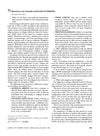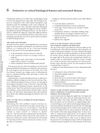The Role of the Glass Ceiling Syndrome in Female Healthcare Workers and Its Association With Telogen Effluvium
October 2025
in “
PubMed
”

TLDR Glass ceiling syndrome is linked to stress-related hair loss in female healthcare workers.
The study investigates the relationship between glass ceiling syndrome and telogen effluvium (TE) in female healthcare workers, involving 108 participants. It finds a significant statistical link between experiencing glass ceiling syndrome and developing TE, a common stress-related hair loss condition. The study highlights that 85% of participants reported hair shedding within 1-3 months after workplace stressors related to the glass ceiling, such as promotion denial or gender discrimination. Nurses and other health workers, who often have lower education levels than doctors, are more prone to glass ceiling syndrome. The findings suggest that addressing glass ceiling syndrome and providing psychiatric support could help manage TE in affected individuals.




